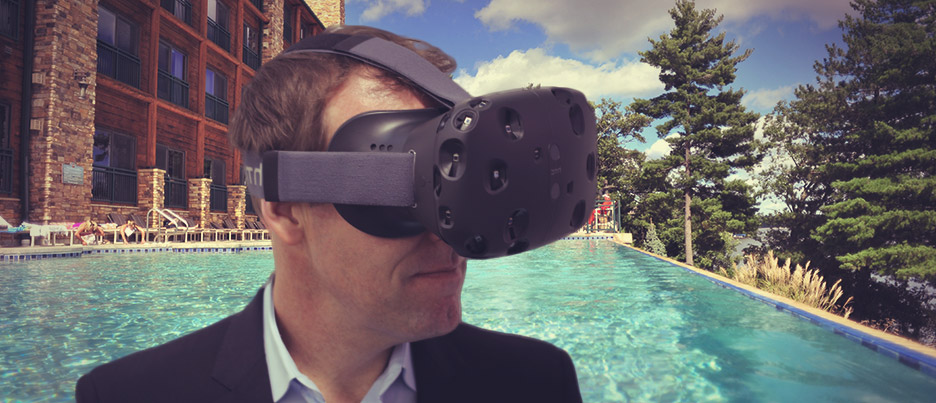VIRTUAL REALITY: The new Hitchhiker’s Guide to the Galaxy

For years, virtual reality (VR) has been just out of reach, existing only on the big screen through sci-fi films and fantasy. We have been anxiously awaiting the age of flying cars, time machines, aliens and home automation.
Well, time’s up! We want to travel to Berlin for The Festival of Lights and then off to Osaka for some takoyaki (octopus fried in salty pancake batter), and then catch a late performance at the Sydney Opera House… and we want to do it all in one day.
While the aforementioned time traveling might be a few more years out, in 2015 we are finally nearing the forefront of virtual and augmented reality. And companies like Samsung and Oculus are already changing the tourism industry with this technology.
Virtual reality is the computer-generated simulation of a three-dimensional image or environment that can be interacted with in a seemingly real or physical way via special electronic equipment, such as a helmet with a screen inside or gloves fitted with sensors (thanks, Google).
Cue Google and Google Cardboard, Sony and Project Morpheus, Samsung and Samsung Gear VR as well as stand-alone companies like Oculus, and suddenly you’re caught in the onslaught of tech ringleaders telling you that you ‘must have VR for your company’.
The tourism industry has seen some of the most promising implementations of VR to date:
British Columbia partnered with Oculus to create “The Wild Within” – a completely immersive experience where viewers can witness the pristine coastal wilderness of British Columbia, Canada. Viewers are given the option to travel by boat along the coast or to trek up a glacial waterfall. Unfortunately, if you (like me) don’t own the Oculus Rift prototype headset or an Android phone, then you’re out of luck on viewing the wonders of BC without hopping on a plane. But you can watch the making of the stunning experience here:
https://youtube.com/watch?v=4SkHdRvPbv4
Qantas Airlines, in partnership with Samsung and Rapid VR, offered first class travelers the opportunity to view The Great Barrier Reef and Hamilton Island in VR style while 35,000 feet in the air. This experience comes with the promise of more flights between Brisbane and Hamilton Island in hopes of shedding more light on Australian tourism.
Yet, with some headsets estimated at over $300 each, not including software and video design or headphones, it’s understandable to not want to pre-order the gear or hire a production team right off the back. This brings us to Google Cardboard, the most attainable VR headset (under $30, assuming that you own a smartphone) for the average person and any company merely dabbling in VR. Complete with VR enhanced Google Earth, YouTube and Street View, Cardboard is putting VR capabilities in the hands of the masses. Just download one of the Cardboard compatible apps, align your phone with your viewer, and enjoy the show.
While it is hard to judge the outright benefits of VR because many companies are in the beginning stages of integrating it into their marketing plans, the response has generally been positive.
Virtual reality allows for an utmost personal user experience and hopefully this means excitement and motivation to visit a particular place. But, how much is too much? Companies want to reveal just enough to lure a visitor, but if you can experience the beaches of Hawaii and the Great Wall of China from your recliner, why would you want to book a room in your Cape Cod luxury hotel? In the realm of PR, this technology could particularly be helpful in attracting travel journalists. Imagine opening up a press kit in Chicago and riding a jet ski across the crystal blue waters of Green Bay five minutes later. Marketing teams can integrate VR into their public relations strategy through press kits. Journalists will be able to interact with a place or product before making the trip, saving time and money in the long run.
With VR technology projected to reach over $600 billion in 2016, there’s no doubt that consumers will shop, plan and make valuable decisions based on a company’s virtual reality experience in the near future. While virtual reality still has a lot to iron out, I’d like to think that it’s closer than a future where everyone’s got a hover board and a robotic maid in their house.
Now all of this travel talk is quite exhausting.
Can I order a pizza from my Google Cardboard?
Maybe not yet.
But soon.

